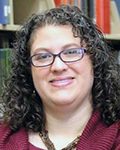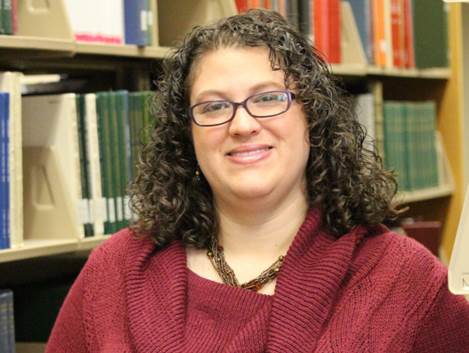We’re taking time over the following weeks to get to know the members of the GSA’s Early Career Scientist Committees. Join us every week to learn more about our early career scientist advocates.

Jessica Velez
Communication and Outreach Subcommittee
University of Tennessee Knoxville/Oak Ridge National Laboratory
Research Interest:
Agriculture has become a multifaceted industry as the production of biofuels and the need for greater sustainability grow in prevalence. There is a finite amount of land available for either biofuel or food crop systems, and land availability is further limited due to the presence of major pollutants—including heavy metal contaminants—leading to phytotoxicity and other concerns. Plants serve as hosts to a diverse community of microbes, including fungi, which are capable of metabolizing and/or immobilizing soil compounds which the plant cannot. Some mycorrhizal fungi directly interact with heavy metal contaminants within the soil, and a fungal-plant symbiosis may increase a plant’s ability to survive in a soil containing high heavy metal concentrations. These relationships are often difficult to disentangle as a single plant species may be associated with hundreds of fungal species, and each of these associations can display varying influences on host plant survival and growth that co-vary with the environmental and physical conditions of the soil. Manipulation of host-plant symbionts may increase plant tolerance to soil conditions that would otherwise be toxic to the plant, increasing overall land availability for use in agriculture. This would encourage the planting of biofuel crops within fields that may not be optimized for the growth of crops intended for consumption due to the contamination of the soil, thereby avoiding the “food-for-fuel” tradeoff that has driven agronomic policy concerns in the biofuel industry.
My research project aims to characterize the plant-fungal relationship between the ubiquitous ectomycorrhizal fungus Cenococcum geophilum and the potential biofuel crop Populus (Poplar) in relation to the presence of heavy metals. C. geophilum has been found in heavily contaminated sites—such as locations saturated with copper mine runoff—and has been implicated in the literature to display increased heavy metal contamination resistance, which is possibly linked to a high concentration of melanin. In order to determine trait variance patterns across a wide range, I will also complete a phylogenetic analysis of wild strains of C. geophilum isolated from the Pacific Northwest. This analysis will be used to determine if host and fungal phylogenetic patterns across this range co-vary based upon the watershed of origin. These patterns may reveal wild strains of C. geophilum which are both resistant to heavy metal contamination and capable of conferring increased contamination resistance to Poplar.
As a PhD–trained scientist, you have many career options. What career paths interest you the most?
I am passionate about scientific outreach at the local community level, and I look forward to continuing my efforts toward this for my career. I have had the opportunity to join the board of the non-profit Ask A Scientist, which partners with local schools and other organizations to connect students, parents, and other members of the community directly with scientists. I would like to give members of the community the chance not only to meet scientists, but also to speak with us and ask us questions about our fields, careers, and lives in general. There is a fantastic opportunity to open a dialogue with the community, as well as allow scientists to come to a better understanding of how to present our research, messages, and general communication to the public at large in an understandable, compassionate, and easygoing way.
In addition to your research, how else do you want to advance the scientific enterprise?
I would like to encourage scientists and the public to engage directly with each other through various methods, from direct outreach and newspaper editorials to hosting events that allow for community involvement. Collaborations between scientists and their respective communities can serve to bridge the gaps that exist, ultimately helping scientists and the public realize that they are all part of the same community. This type of connection can increase investment in science and scientific endeavors on a community level, as well as inspire the upcoming generation of scientists to pursue a field of interest which they may not have realized existed previously.
As a leader within the Genetics Society of America, what do you hope to accomplish?
I am aiming to increase awareness of the role genetic studies play in society at large, from medical to agricultural applications, with the hope of demystifying genetics for the average citizen. I would like to expand GSA’s current network into more avenues with the aim of creating new partnerships with science communication non-profits, school districts, and student engagement programs. I would also like to encourage engagement of the general community outside of science-specific events through newsletter publications and direct involvement with community initiatives.
Previous Leadership Experience
- Chapter President – Ask A Scientist at the University of Tennessee Knoxville
- Director of Outreach – National Ask A Scientist































